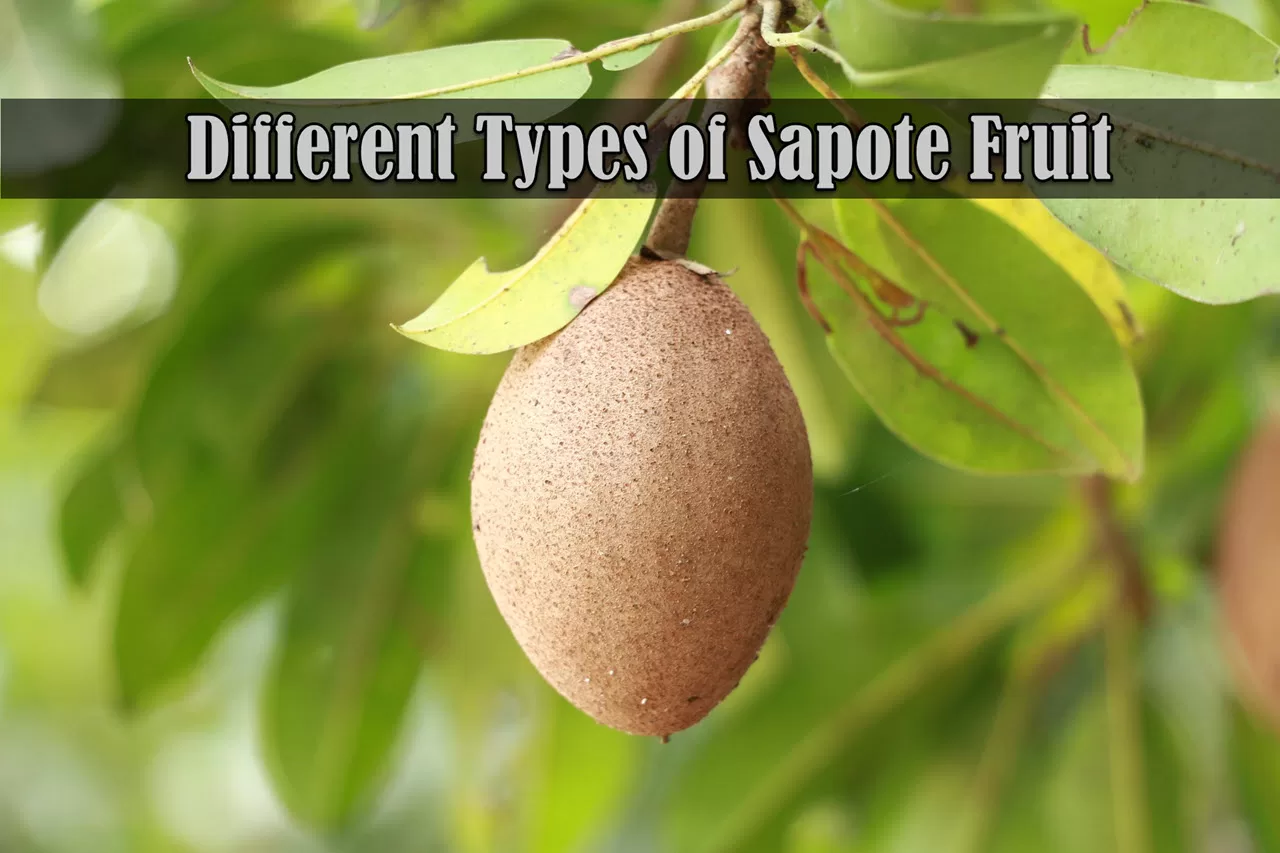9 Different Types of Sapote Fruit with Images

Sapote is a fruit-bearing plant native to northern parts of South America, Southeast Asia, Mexico and Central America. It is called soap apple in Carribean English. The word “sapote” which is derived from “from Nahuatl tzapotl” means a soft edible fruit. This genus, which is from the Rutaceae family, is scientifically known as Pouteria sapota . These types of sapote fruit are classified according to their color and texture. Let’s get to know about this interesting fruit and its variants.
Sapotes Common Names
- zapotemamee sapote
- mamee zapote
- mamee sapote
- mamey colorado
- lava zapote
- grosse sapote
- red mamey
- mamey sapote
- marmalade tree
- mammee apple
- Mamey rojo
- mammea americana l
It is also called sapote à creme in Martinique, mamey in Cuba, de la tierra in Panama, and zapote de carne in Columbia. Additionally, sapotes also have synonyms such as:
- P. mammosa (L.) Cronquist
- Lucuma mammosa Gaertn
- Achradelpha mammosa Cook
- Vitellaria mammosa Radlk
- Calocarpum mammosum Pierre
- C. sapota Merrill
- Sideroxylon sapota Jacq
Sapotes are grafted trees that were sold by nurseries. Its fruits can be eaten fresh or made into ice cream, preserve, and smoothies. This tasty tropical fruit is likely to be seen at the local markets in Mexico.
Sapote is oblong in shape, has a rusty brown skin, and with a medium to large size (range from 2 to 4 inches in diameter). The fruit has a resemblance to an avocado, with a large central pit that contains seeds. The fruit seeds texture and taste is similar to an almond, but are not edible. Sapote is also known to be an excellent source of various nutrients such as Magnesium, Potassium, Vitamin A, Vitamin C, Iron, Calcium, and Phosphorous.
Different Types of Sapote Fruit
White Sapote
The white sapote, also known as Mexican apple and Casimiroa edulis. The White sapote trees are from the family of Rutaceae. This is believed to be native to Costa Rica, El Salvador, northern and southern Mexico, and Guatemala. The white sapote looks like an apple variety that is round in shape and with a yellow or green skin. Its white flesh is soft and is perishable, but can be refrigerated. It has a banana or pear-like taste. The fruit is also called a “sleeping sapote” because of its seed that contains narcotic substance. It is best eaten fresh.
Black Sapote
Also known as Diospyros nigra, is from the family Ebenaceae. Black Sapote is native to eatern Mexico to south columbia and known to be the original Aztec tzapotl. The fruit can also be found in southern California. It is considered as the most famous sapote type because of its sweet and unexplainable flavor. As a matter of fact, it is named as the “chocolate pudding fruit”. Black sapote appears to be like a greenish-yellow tomato with a chocolate brown flesh color. It is recommended to consume the black sapote when ripe as the fruit has a bitter and irritating taste when they are yet to mature.
Yellow Sapote
It comes from the family Sapotaceae. This variety of sapote is known as (Pouteria campechian) is native to Central America and Mexico. It is also called the Canistel. It is an orange-yellow fruit that can grow up to 7 cm long. The flesh is sweet in taste and a fruit that looks like a hard-boiled egg yolk. Thus, this variety is also called “eggfruit”. This evergreen tree is native to El Salvador, southern Mexico, Guatemala, and Belize.
Ross Sapote
It is one of the fruits of warm climates. Ross fruit is large in size, with an orange-yellow skin, and has a round shape. Its flesh is soft and has a sweet and delicious caramel aroma flavor. This fast growing plant is known to be a close relative to Canistel. It is recommended to trim the sapote leaves when shipping to avoid travel stress.
Mamey Sapote
This variety is native to southern Mexico to northern South America. The fruit is known to be the largest sapote variety and is a relevant plant in Puerto Rico. Known as sapote Pouteria Sapota, mamey sapote texture is similar to a smaller grapefruit and a larger version of a coconut fruit when matured. Its flesh is color red and has a smooth and vague taste. It is often used to make ice cream, smoothies, and milkshakes.
Southern American
This variety comes from the family of Malvaceae, a family of flowering plants. The fruit originated from the Amazon rainforests of Colombia, Brazil, Peru, and Ecuador. Southern american sapote is also known as chupa chupa. It has a yellow-orange flesh that is smooth and sweet in taste. This genus is cultivated in Florida (particularly in the University of Florida) for a larger production and distribution around the world.
Chapote
from the family Ebenaceae and scientifically known as Diospyros texana, chapote is a Spanish name derived from Nahuatl word tzapotl. It also has various common names like Mexican persimmon, Texas persimmon, and black persimmon. The chapote tree produces urn-shaped white flowers from March or April. Chapote fruits are dark in color that grow up to 2.5 cm in diameter and are expected to ripen in the month of August.
Sapodilla
also known as Manilkara zapota, is an evergreen tree originated from Central America, southern Mexico, and the Caribbean. It bears a desirable and interesting tropical fruit that is undoubtedly delicious. The Sapodilla fruit is also an excellent source of vitamin C, fiber, vitamin A, and other essential nutrients. It has a soft flesh that is high in sugar content and therefore, sweet in flavor. To consume the fruit, slice it into half or scoop the flesh with a spoon.
Green Sapote
Scientifically known as Pouteria viridis, is a flowering plant species from the family of Sapotaceae. It is close-relative to mamey sapote, but is slightly smaller compared to the latter. It has a green-yellow or brownish peel and a red-orange peel. This variety is famous outside South America. It is best eaten fresh or can also be used in making desserts. It has edible seeds.
People in any part of the world who don’t know the impressive health benefits sapotes offer should hear this news. If you know someone who’s up to losing weight, wants to improve heart condition, and strengthens the immune system, all they need is to find a number of these varieties at their nearest grocery store or farmers market.





